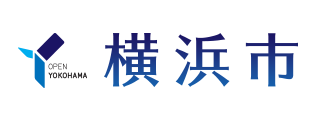Here's the text.
January 2025 issue of Yokohama-Chinatown
Yokohama with sea, port, greenery, history, region, people and various attractions. We will deliver the color of this city as "Yokohama Aya Discovery". This time from Yokohama Museum of EurAsian Cultures (Naka Ward) in connection with the Spring Festival on January 29.
Last Updated February 3, 2025
As for the publication contents of "public information Yokohama" January, 2025 issue "Yokohama Aya discovery", please see link.
Yokohama-Chinatown's Fancy
Izumi Ito, Deputy Director of Yokohama Museum of EurAsian Cultures
Yokohama is a gorgeous city where New Year comes twice. One is the New Year's Day of the New Year, and the other is the New Year's Day of the lunar calendar. In Yokohama-Chinatown, on New Year's Eve in the New Year's Eve, the "Yingshun Countdown" is held at the Guang Tei and Mazu Shrines, and on New Year's Eve in the lunar calendar, the "Spring Festival Countdown" is held inYamashita-Cho Koen.
In the old days, there was an article about Yokohama-Chinatown's Spring Festival in an English magazine called "Japan Punch" in February 1883 (Meiji 16), but the Yokohama guidebook in 1913 (Daisho 2) introduces the New Year of the Republic of China as one of the annual events in Yokohama. At that time, during the Spring Festival, the eaves and entrances of the houses in Chinatown were decorated with lanterns and annual paintings depicting Kichijo patterns celebrating the New Year, and it would have been a lively atmosphere full of Chinese atmosphere.

[Photo 1] The giant lantern of the Spring Festival 2022
Then time passed, and the first Spring Festival was held in 1986 (Showa 61). Unlike the past, lion dance, dragon dance, dance, etc. were performed on a special stage as an event in Chinatown for tourists. Since then, spring festival lights such as red lanterns and Hyakubushi dragons have decorated the city and have become lively year by year. Although the scale was once reduced due to the spread of COVID-19, it has taken a leap forward, and huge lantern objects appeared not only at Chinatown but also at stations in Minato Mirai Line [Photo 1]. Since 2022, Yokohama City Hall has also supported the project, and the giant lantern objects have been installed at 32 locations, including Landmark Plaza, Basyamichi, Marine Tower, Motomachi, Yokohama Station and Haneda Airport Terminal 3. It has already evolved from a festival in Chinatown to a major early spring event in the center of Yokohama.
In addition to the Spring Festival, there is another representative festival of Yokohama-Chinatown. It's the birth of Seki Emperor in summer. Guan Emperor's Birth is a celebration of the birthday of Guanha, the main god of the Yokohama Kantei Mausoleum. Kanba is a hero of Mikuni Shi, a military commander who is a strong military commander in faith, and was also a abacus, so it is praised as a god of business, and mausoleums are built in China and around the world. The Kantei Shrine in Yokohama has a long history, and it began when a small shrine was built during the opening of the port at the end of the Tokugawa period. In 1871 (Meiji 4), a full-fledged first-fledged Seki Imperial Mausoleum was built [Photo 2]. After that, a large-scale renovation was carried out in 1891 (Meiji 24), and it became a brick mausoleum that was described as a castle [Photo 3]. There is a record that the birth of Seki Emperor was also held in the first year of the Meiji era, but in July 1910 (Meiji 43), the 25th anniversary of the renovation of the Seki Emperor was celebrated, and a large-scale Seki Emperor's birth was held, and a commemorative postcard appeared. [Photo 4].
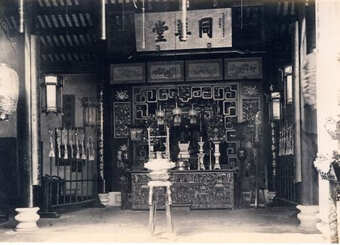
[Photo 2] The first Seki Imperial Mausoleum
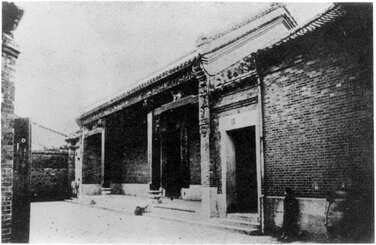
[Photo 3] After the Great Renovation of the Guan Imperial Mausoleum
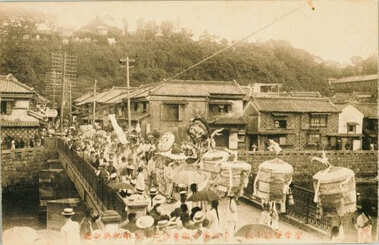
[Photo 4] The procession of the Emperor Seki

[Photo 5] Exhibition of artifacts from the Yokohama Seki Imperial Mausoleum
The Kantei Shrine was destroyed and burned down in the Great Kanto Earthquake of September 1923. After that, the second Seki Emperor's Mausoleum was rebuilt, but the large-scale Seki Emperor's birth that paraded around the city as it used to disappeared. And the second Kan Imperial Mausoleum was also destroyed by the Great Yokohama Air Raid in 1945. However, two years later, the third Kan Imperial Mausoleum was built in 1947 (Showa 22), protecting the city and people of Chinatown for nearly 40 years. However, a fire broke out on New Year's Day in 1986 (Showa 61), and a part of the mausoleum was burned down. The Kan Tei Mausoleum was burned three times, but at this time, the people of Chinatown gathered together, and the 4th Kan Tei Mausoleum was erected in 1990. Then, in August 1991 (Heisei 3), the first resurrection of Seki Emperor began to be held as a festival of the entire Chinatown, starting from the festival inside the Seki Emperor's Mausoleum.
In 2019, during the construction of a new school building at Yokohama Chinese Academy in Chinatown, the remains of the Kan Imperial Temple before the Great Kanto Earthquake and the adjacent China Hall were excavated. The granite paving stones excavated at that time can now be seen in the outdoor exhibition space next to the Yokohama Kantei Mausoleum. It is a valuable place where you can feel the history of Chinatown [Photo 5].
Now, a few minutes walk from Yokohama-Chinatown, Yokohama Museum of EurAsian Cultures is a museum based on the concept of "connecting to the world in Yokohama." Using materials donated by Oriental scholar Namio Egami as the core, it introduces the history and artifacts of various ethnic groups in the Eurasia region, and focuses on the internationality of Yokohama and introduces the diverse cultures that live in this city. We have held exhibitions on Yokohama-Chinatown twice so far, introducing the history of the city since the opening of the port and the fashion culture that has been passed on to it [Photo 6]. From January this year, a new wedding costume for overseas Chinese Yokohama has been exhibited in the "wearing" section of the permanent exhibition room [Photo 7].
In addition, is also a tile-to-takuhon from the Han Dynasty era, which is related to Pairo (gate) east, west, north and south of Chinatown [Photo 8]. The roof tiles are tiles at the eaves, and the roof tiles are copied by applying ink to them. According to ancient Chinese thought, there is a beast that governs each, east, west, north and south, and the color that represents each is also determined. The east is Seiryu, the west is the White Tiger, the south is the Ruitori Suzaku, and the north is the black Xuanwu, where turtles and snakes are combined. In the direction of east, west, north and south, tiles in the shape of a beast were attached to prevent evil from entering the building. The plaques in Chinatown are also designed based on this idea.

[Photo 6] Exhibition Catalog
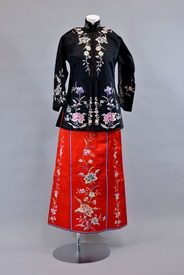
[Photo 7] Wedding costume of overseas Chinese Yokohama
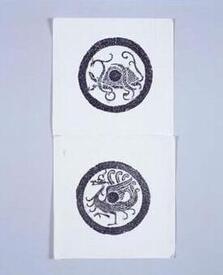
[Photo 8] Tile rubbed
When you come to Yokohama-Chinatown for the New Year or the New Guan Emperor's Festival, we hope that you will reach Yokohama Museum of EurAsian Cultures and experience a part of the history and culture of Chinatown.
- Photo 1: Large lantern object at Bashamichi Station, Minato Mirai Line Spring Festival 2022 Shooted: Izumi Ito
- Photo 2: The Far East, September 16, 1871, Collection of Yokohama Archives of History.
- Photo 3: "Yokohama Famous Photo Book" after major renovation, Yokohama Archives of History Collection 1909
- Photo 4: 25th anniversary of the renovation of the Kan Imperial Mausoleum 1910 Postcard from Yokohama Archives of History
- Photo 5: Exhibited items from the Yokohama Seki Imperial Mausoleum Photographed in 2024: Izumi Ito
- Photo 6: "The trajectory of Yokohama-Chinatown 160 years - because this city is my hometown." And the catalog of the exhibition "Yokohama Chinatown, dressed in Chinese overseas women's clothing magazine"
- Photo 7: Yokohama Museum of EurAsian Cultures Kura, donated by the Guangdong Kaikan Club around 1940.
- Photo 8: Takumoto Xuanwu (top) and Suzaku (bottom) Yokohama Museum of EurAsian Cultures (bottom)
[Reception end] Reader present
The application has been closed, and prizes have been sent to the winners on Monday, February 3. Thank you very much for your application.
Thank you for always seeing "Public Information Yokohama" and "Yokohama Aya Discovery". 5 groups of 10 people will receive an invitation ticket for the permanent exhibition of Yokohama Museum of EurAsian Cultures and Museum of Yokohama Urban History and the special exhibition of Museum of Yokohama Urban History, "Living in the Canal: The River Canal" in Yokohama, which supported the city. If you wish, please refer to the following six items. ※Please specify and apply by postcard (to Yokohama City Hall Policy and Management Bureau, 6-50-10 Honcho, Naka-ku, Yokohama 231-0005) or e-mail (sss-saihakken@city.yokohama.jp). The deadline must arrive on Sunday, February 2, 2025.
※ 1.Postal code, 2. Address, 3. Name, 4. Impression, 5. I would like to read, 6. "I wish to present the January issue"
The winner's announcement will be returned by sending the prize. In addition, the personal information you receive will not be used for any purpose other than sending prizes.
Public Relations Section, Policy Management Bureau, Yokohama City Hall TEL: 045‐671-2331 FAX: 045‐661-2351
Inquiries to this page
Yokohama Museum of EurAsian Cultures
Telephone: 045-663-2424
Telephone: 045-663-2424
Fax: 045-663-2453
Page ID: 657-959-261

